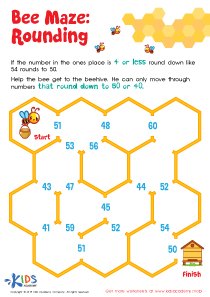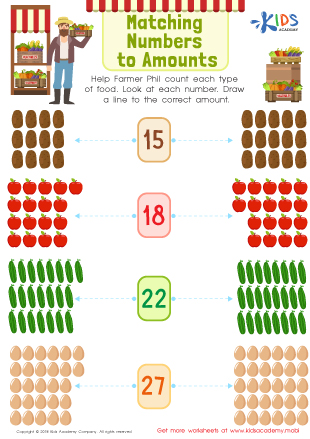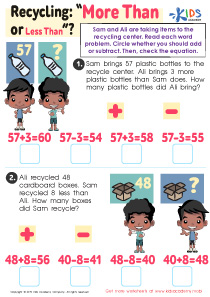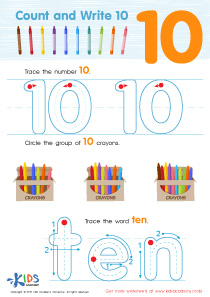Normal Numbers 11–20 Worksheets for Ages 5-8
4 filtered results
-
From - To
Discover engaging and educational "Normal Numbers 11–20 Worksheets" designed specifically for children ages 5-8. These printable resources from Kids Academy focus on enhancing numerical proficiency by guiding young learners through counting, recognizing, and writing numbers 11 through 20. Each worksheet is crafted to build foundational math skills with fun exercises like matching, sequencing, and simple addition and subtraction. Perfect for classroom use or at-home practice, our worksheets make learning numbers an enjoyable experience, ensuring your child grows confident in their math abilities. Explore our selection today to bolster your child’s numerical knowledge and boost their enthusiasm for math!
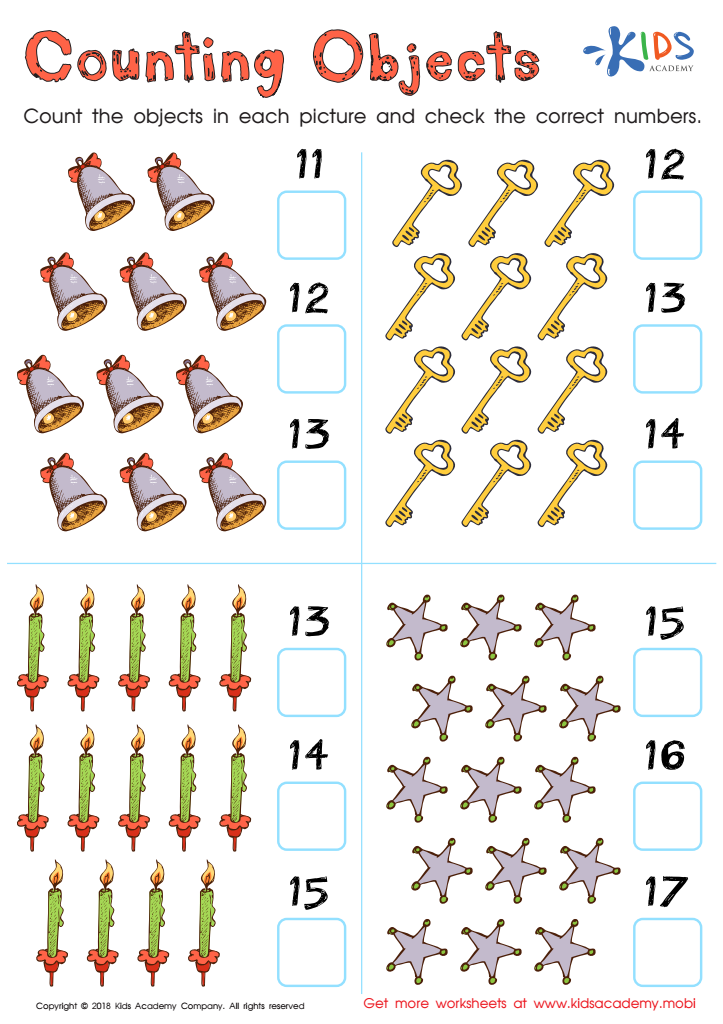

Counting Numbers Worksheet For Kindergarten
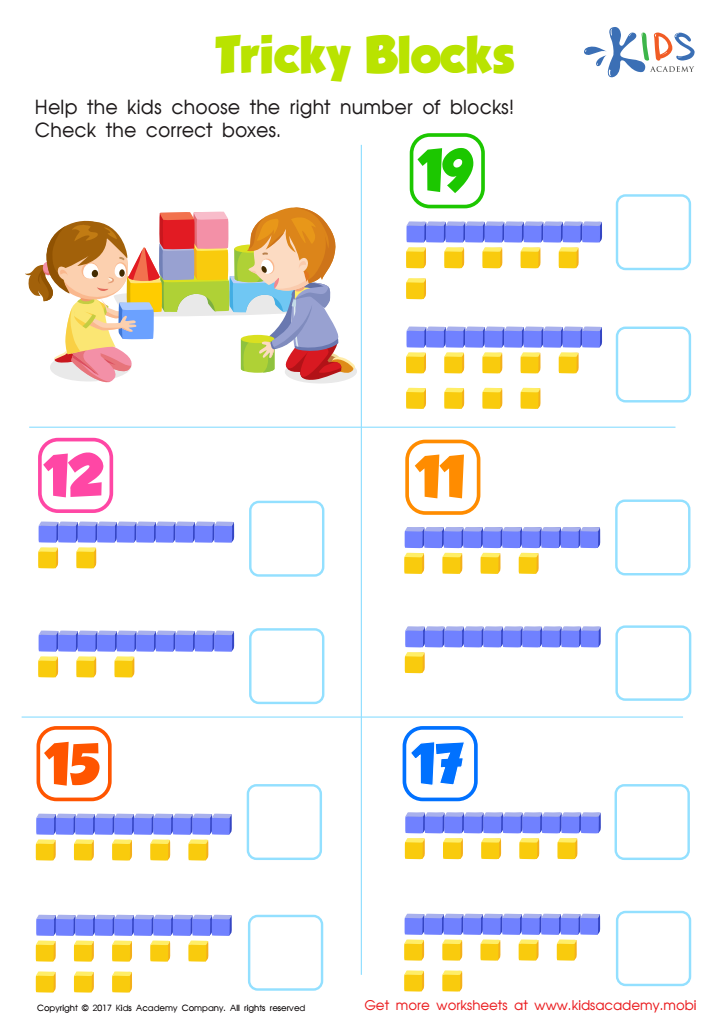

Tricky Blocks Worksheet
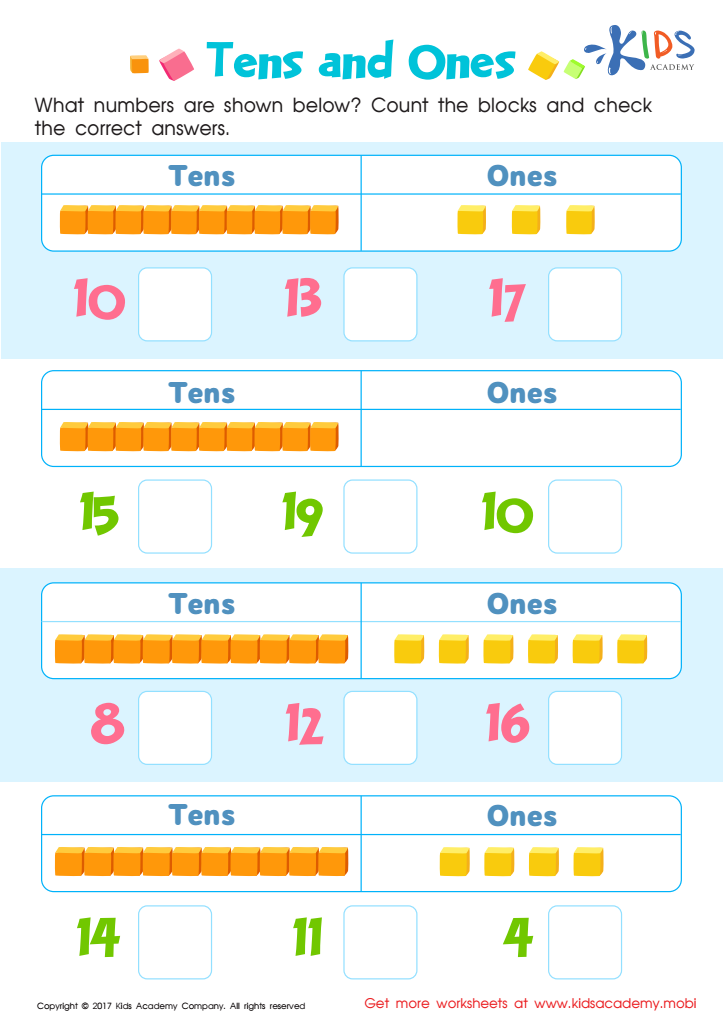

Tens and Ones Worksheet
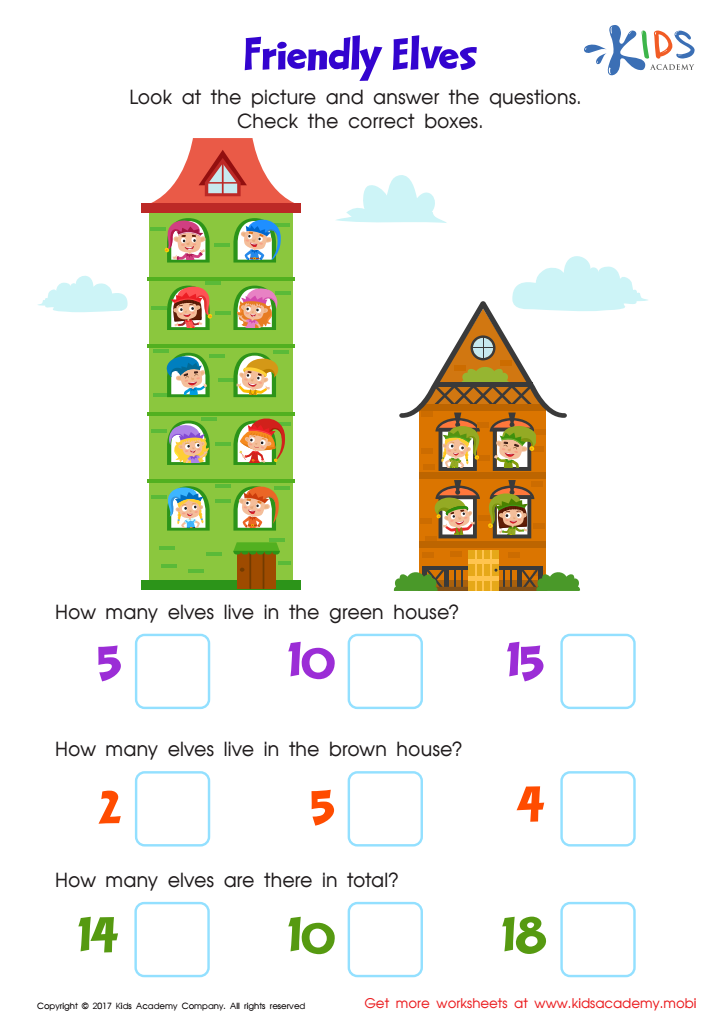

Place Value: Friendly Elves Worksheet
Understanding and familiarizing with the numbers 11–20 is crucial in the early educational stage for children aged 5-8 because this range forms the foundational building blocks for future math skills. At this age, children transition from recognizing single digits to comprehending two-digit numbers, which is vital for their cognitive development and arithmetic competency.
First, numbers 11–20 introduce the concept of place value, teaching children that numbers represent different amounts based on their position. For example, '11' and '21' differ because the position changes the meaning entirely. This knowledge is critical for performing higher-level mathematical operations like addition, subtraction, and even multiplication.
Second, mastering these numbers helps children gain confidence in their numeracy skills. Familiarity leads to quicker mental arithmetic, essential for everyday activities and academic challenges.
Finally, understanding numbers 11–20 paves the way for learning more complex math concepts like counting by tens, understanding sequences, grouping, and patterns. Early proficiency in this numeric range also helps build stronger reasoning and problem-solving skills, laying a solid mathematical foundation.
Thus, parents and teachers should care greatly about teaching these numbers because an early, thorough grasp sets the stage for future academic success and daily life competencies.
 Assign to My Students
Assign to My Students


